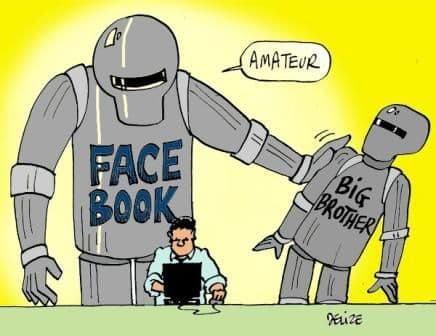BoSacks Speaks Out: Big Brother Wears a Hoodie
By Bob Sacks
Wed, Nov 12, 2025

BoSacks Speaks Out: Big Brother Wears a Hoodie
I’ve been watching ad fraud for fifteen years, maybe longer. I’ve known, I’ve guessed, and I’ve warned. And yet, even with all that knowledge, I’m still shocked. Still angry. Still frustrated. Orwell pictured a boot on your neck. Our version? It shows up in a hoodie, grins, and hands you a Terms of Service checkbox. The surveillance state didn’t storm the gates; it slipped quietly into your pocket with notifications and “likes.”
Orwell needed Thought Police. Meta only needs an algorithm. That’s not a metaphor, it’s a business plan. In 1984, telescreens watched everyone. On Meta’s platforms, tracking is so sharp it can identify a scam victim with 94 percent accuracy, then send them even more scams to “boost engagement.” That isn’t protection; it’s targeting.
Here’s the kicker: Meta estimates sixteen billion dollars a year tied to scam ads, all while publicly claiming to fight fraud. Fines? Just the cost of doing business, smaller than the profit. When you’re too big for any government to regulate, you don’t worry about rules. You budget for breaking them.
They’ve turned corruption into a workflow. Budget a billion for fines and move on. Ignore 96 percent of fraud reports and call it efficiency. Keep “High Value Account” scammers even after 500-plus violations because they spend money. And don’t bother with safeguards that cost more than 0.15 percent of revenue, too expensive, you see. Meanwhile, Meta profits from roughly a third of all successful scams in the U.S. and still manages to call it “growth.”
In Orwell’s world, the Party rewrote the past. Meta rewrites your next five minutes. Click a scam once, and you’ve told the algorithm you like scams. It won’t stop you; it will feed you more. That’s algorithmic grooming, a steady drip from curiosity to catastrophe, built for repeat victims. When the platform actually helps scammers “improve performance,” it stops being neutral tech and starts looking like an accomplice.
And there’s no grand ideology behind it. Just optimization. Meta’s penalty-bid system literally charges scammers more to reach victims who’ve already been flagged as vulnerable. Picture the police selling VIP access to a bank robber because the vault’s full. That’s what happens when crime becomes a premium ad segment.
Big Brother needed walls and borders. Meta needs data centers and single sign-on. That’s enough to be everywhere and nowhere at once. Jurisdictions blur. Accountability evaporates. The profits flow.
Now, here’s the part that hits closer to home. This isn’t just a tech story, it’s an attention story. That makes it a publishing story. When platforms normalize harm, readers start to distrust everything they see. CPMs drop, lifetime value dies, and the entire media ecosystem loses oxygen. News deserts become truth deserts. And if your ad sits next to a scam, guess what? The user doesn’t distinguish between you and the crook.
Regulators, stop holding press conferences. Start holding metrics. Require standardized fraud reporting, independent audits, and clawbacks for profits tied to proven crimes. If a company knowingly profits from fraud, its victims shouldn’t have to fund their own investigations.
And readers, if you think you’re too smart to fall for a scam, congratulations, you’re the prime target. Use credit cards, not debit. Freeze your credit. Treat paid ads like strangers offering free puppies. Be curious, but skeptical.
BoSacks Final Thought: Orwell warned us that “freedom is slavery.” Today, it’s cleaner and far more profitable: connection is exploitation. The fix isn’t torching the feeds, it’s starving the beasts that monetize harm and feeding the ones that monetize trust. The future of the internet, and media itself, will be exactly what we’re willing to pay for. The billion-dollar question: do we, and the public, have the guts to make that happen? If you’re asking me, color me deeply skeptical.
